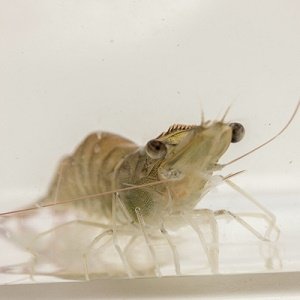USA.- Production data presented at the Global Outlook on Aquaculture Leadership (GOAL) conference in October 2017 showed shrimp production in the country increasing 69 percent between 2013 and 2016. As other global shrimp production regions struggle with the challenge of devastating disease, the Ecuadorean shrimp industry has remained relatively disease-free due to a strong program of preventative measures and government support.
According to Jairo Amezquita, U.S. Soybean Export Council (USSEC) Project Manager for Aquaculture Utilization for the Americas region, Ecuador is the main aquaculture market in Latin America with a potential demand of more than 250,000 tons of soybeans per year for use in aquafeeds. The soy inclusion rate in shrimp diets for Ecuador is between 36-38 percent, and the U.S. market share in Ecuador is currently 36 percent. This market is very much coveted by soy producing countries in the region, with soy products that generally command a lower price than U.S. Soy. However, the benefits of` sustainable U.S. Soy, along with trade and technical support for the local industry from USSEC’s International Soy in Aquaculture Program, has resulted in a greater preference and demand for U.S. soybeans over competitive, nearby sources.
“USSEC hosts feed demonstrations in Ecuador and these give aquaculture farmers a firsthand look at the U.S. Soy Advantage and help to build confidence in the market there,” says Amezquita.
USSEC also builds preference for U.S. Soy in Ecuador’s market in several other ways, according to Amezquita.
“USSEC’s aquaculture program also supports feed mills and aquaculture producers by contracting with specialists in genetics, water and soil management, animal health, nutrition, production management, and management of risk,” says Amezquita. “All of these trade and technical services have resulted in greater efficiency in production yields and better economic benefits for operators committing to sustainable aquaculture.”
To help drive market demand, USSEC works closely with Ecuador’s National Chamber of Aquaculture on global marketing strategies, promoting the high quality of farmed fish and shrimp to domestic markets. These activities include assisting operators in engaging with aquaculture sustainability certification programs, such as Best Aquaculture Practices (BAP) and the Aquaculture Stewardship Council, and helping them through the rigorous certification processes. In 2017, the U.S. Soy Sustainability Assurance Protocol (SSAP) was included as a soy-sourcing standard as part of BAP’s feed mill standards.
“We are continuously training the Ecuadorean aquaculture industry in innovative aspects of both production and business,” says Amezquita. “This is very much appreciated by the industry, and as a result, the market for U.S. Soy products for aquafeeds is growing in step with the aquaculture industry’s success.”
Stay Always Informed
Join our communities to instantly receive the most important news, reports, and analysis from the aquaculture industry.
Source: USSOY
Editor at the digital magazine AquaHoy. He holds a degree in Aquaculture Biology from the National University of Santa (UNS) and a Master’s degree in Science and Innovation Management from the Polytechnic University of Valencia, with postgraduate diplomas in Business Innovation and Innovation Management. He possesses extensive experience in the aquaculture and fisheries sector, having led the Fisheries Innovation Unit of the National Program for Innovation in Fisheries and Aquaculture (PNIPA). He has served as a senior consultant in technology watch, an innovation project formulator and advisor, and a lecturer at UNS. He is a member of the Peruvian College of Biologists and was recognized by the World Aquaculture Society (WAS) in 2016 for his contribution to aquaculture.


